This pink descanso, located alongside the heart of Highway 62 is fair representative of the patchwork, eclectic community residing thereabouts. Sans epitaph, this cross was emblazoned with a handful of symbols, including a pair of military insignias, a dreamcatcher, and the logo for the Pittsburgh Steelers. While casual onlookers might think this shrine is a colorful contrast to its barren surroundings, it’s really not. Not in the bohemian desert enclave that is Joshua Tree.
I’ve penned several sectors over in The Bear and the Star about the general hoodoo located in and around Joshua Tree National Park, including a few missives on the small town itself just outside the park’s main northwest entrance. Joshua Tree is part artist colony, part celebrity escape, and part blue collar working force hub. It’s the main district of Highway 62’s commerce, sparse as it is, and its offerings run from high end designer coffee shops to rundown dollar stores, community meth clinics to cult spirituality retreats, gem and rock shops to avant-garde apothecaries. Airbnb runs a brisk business out that way, a good portion of residences there are vacation rentals, and a great number of recently acquired properties post-Covid have ramped up considerably, presumably purchased by Angelenos looking to have an escape door from the next pandemic.
Most of the city of Joshua Tree’s note in cultural consciousness is its role as the gateway to the national park, of course. Most folks visit to see the infamous Seussian trees, which were titled as such by 19th century Mormon immigrants after their prophet Joshua. The yucca brevifolia went by its original indigenous names before colonialism set in…hunuvat chiy'a and humwichawa in the Cahuilla tribe tongue, sovarampi in Southern Paiute language, and choor-martsh by the Serrano tribe. Don’t fucking climb them, please, and try not to touch them. You’ll be tempted. Don’t. Go scramble on the sandstone boulders instead.
You roadies can rightly assume you will find zero descansos on Park Boulevard, the road that runs straight through the national park to Interstate 10. No, park rangers would never allow such view-spoiling desecration thereabouts. Plus, not too many fatalities happen inside the park via vehicular mayhem because most folks drive pretty slow as they take in the sweeping, epic landscapes. Though the area does incur its share of accidental deaths each year, usually from tourists hiking too deeply into the wilderness and dying from exposure or underestimated temperatures. That said, I have seen a few shrines on the entry and exit stretches before the park’s official northern border, including this epithet-less construct located on Park Boulevard heavy on angelic statuary and white floral arrangements.
There are a handful of joints I patronize in Joshua Tree…a coffee shop or two, the Crossroads Cafe, the unofficial park shop Coyote Corner (lots of great Indigenous-made and Mexica goods there) and last but not least, the Joshua Tree Saloon, one of my very favorite bars in California. That watering hole has a little bit of everything, karaoke, a pool table, an outside patio replete with a long bar and industrial fans, strong drinks and decent truck stop food.
I’m a sucker for old, rustic, western taverns in this golden state of mine. If one wanted to try and track me down during my wanderlust travels, it’d be a good bet to visit any of the commonly known bars and eateries modeled after our frontier colonizing days peppered about the wastelands of California. Some of those include the saloon in J.T., Pappy and Harriet’s in Pioneertown, Cold Springs Tavern off the 154, the Deer Lodge in Ojai, the Melodrama Hall in Oceano, the Maverick Saloon and the Longhorn Cafe in the Santa Ynez Valley, Harry’s Nightclub in Pismo Beach, the Twisted Oak in Camarillo, the Canyon Club in Agoura Hills, the Big Sur River Inn, the Hog’s Breath Inn in Carmel-by-the-Sea, the Old Western Saloon in Point Reyes, and the original Hitching Post in Casmalia. Eastern California and western Nevada in the high Sierra have a fair share of these old school style outposts as well…Cutthroat’s Saloon at the Hyatt in Incline Village (and its high end restaurant sister the Lone Eagle Grill), the Madison Bear Garden bar in Chico, pretty much any joint in Virginia City outside of Reno, Chambers Landing in west Tahoe, the Hideout Saloon in Mariposa, the Tiger Bar in June Lake.
Wild West homage places were bred in me at an early age, thanks to the small town, equestrian-oriented enclave where I grew up. You all know the types…the Route 66 podunk style diner-bars with rusted horseshoes, old bridles and saddles, and horned cow skulls mounted on the walls, reeking of breaded appetizers, pancake batter, and greasy linoleum, appointed in red and white checkered tablecloths topped with petrified ketchup bottles and crusty salt and pepper shakers.
Some of my finest zen has been acquired sitting at a grill-side counter, slurping hot Folger’s coffee and wolfing down over-medium eggs, underdone hash browns, and crispy bacon while reading a local newspaper (usually, in days of yore, the L.A. Times or the S.F. Chronicle, these days my stupid tech-yoke iPhone), all the while surrounded by chattering visitors or grizzled local veterans bitching about some partisan thing or another. I strongly recommend a visit to the J. T. saloon. It’s an oasis, and yes, you’ll have to deal with testy locals and sunburned touristas elbow-rubbing each other at animated volume, but the margaritas, the stuffed jalapenos and above all the ambience, are worth going out of your way.
Anyhoo. That stretch of the 62 between Yucca Valley and 29 Palms often has the most descansos per mile of any of the 62’s sectors, probably because it’s the most populated. The eclectic vibe there, a melange of neocon populism, working class sweat, and sun-baked artiste dreaming, lends itself to rendering many of those memorials with dramatic embellishments, as seen in some of the following shrines.
This double heart-shaped array seemed to homage a woman named Ashly.
An epitaph-less marker on the east side of 62 near Joshua Tree.
A marker for ‘David.’
A marker for ‘Samantha.’
An impressive construct memorializing one ‘Anna Maria.’
One of the tallest descansos I’ve come across, this one commemorating one Thomas Owens.
Whether you visit the park proper (and you should, with respectful, leave-no-trace method) or if you’re just en route via the back roads to Arizona, know in no uncertain terms the township of Joshua Tree, its central artery of Highway 62, and the surrounding foothills of the Eagle and Coxcomb Mountains are heavily laden in all kinds of saturated emotional imprints, across virtually all spectra of existential wavelengths, not merely life and death but also of mind, time, and soul. Heck, power and space too, might as well make the hack Marvel Infinity Stone comparison because it’s apropos in a lot of ways.
The sun-baked boulders of Joshua Tree have absorbed many an ethereal human footprint, from the first Indigenous settlers of the Serrano, Cahuilla, Chemehuevi, and Mojave tribes, who consider Joshua Tree environs their homelands, to the first gold rush prospectors, to modern day outdoor enthusiasts. If you’re in tune with your inner mojo, tread carefully about that wilderness. Get your meditation on there, you betcha, but be forewarned, it’s not a place for the meek nor those unwilling to bare all of their inner selves to what lays about that wondrously dangerous expanse, including, but not limited to, the sun, the moon, the endless stars above that International Dark Sky destination, dimensional rifts and drag-racing UFO saucers, and most of all, an entire nation-state of drifting ghost-souls slumming about the majestic vistas of Joshua Tree.
If you happen to come across the specter of Gram Parsons, legendary country musician of the Flying Burrito Brothers who passed from a serious bender in Room 8 of the Joshua Tree Inn (there’s a stone, guitar-shaped memorial in the room itself to this day), be polite to him if he speaks to you. His body was taken by his manager to the park and illegally cremated right there on federal lands due to Parsons’ love for the desert, avid UFO chaser and wandering gadabout that he was. Ask him where the best burrito is up that way. If he doesn’t say Algoberto’s or Las Palmas, you’ve got an imposter on your hands. You’d probably be less concerned about burrito quality in the moment, because after all, you’d be speaking with a ghost, enjoying proof positive there is indeed an afterlife, and that sometimes, some souls elect to postpone their immersion into the Light and decide to keep hangin’ out on Terra Firma for a while for some reason or another.
Me? I’ve always fancied I too, will delay my ascension upon the shutdown of the old’ bonebag for a brief period (the whole nonlinear time thing often rumored once we leave these water and stardust shells of ours notwithstanding), in order to take a few beats. Why? To determine once and for all the truth of those assorted cryptozoological and cryptoarchaeological mysteries I’ve been puzzling over all my life, ever since I was bequeathed those infamous ‘Weird and Wild’ myth encyclopedias as a kid. Yep, before I head on into the fields of Elysium (trademark trope!) and leave the earth behind for good, I’d love to ascertain the true nature of any number of longstanding mysteries, including, but not limited to, the disappearance of Amelia Earhart, the Bermuda Triangle, the pyramids in Antarctica, the riddle of the Sphinx, the Maya, the Inca, Lemuria, the Roanoke Colony, the Loch Ness Monster and her sister Tahoe Tessie, the whole question of alien life and the UFO apocrypha, secret human Mars and moon bases, and of course, the venerable granddaddy of crypto-anthropology, the hidden human-apes like the Yeti and the Sasquatch.
If you’re wondering if the high desert has its own proto-primate of mysterious folklore, it most certainly does. The Yucca Man is the desert’s derivative of Bigfoot, also colloquially known as the Mojave Bigfoot, the Sierra Highway Devil, and Marvin of the Mojave. The military folks at the marine base in 29 Palms called him ‘Blue Eyes.’ Most Highway 62 locals are familiar with reported sightings of their local cryptid, a supposed desert adapted sasquatch that lives throughout Southern California, Nevada, and Arizona. Investigators claim the shaggy folk are humanoid creatures pushed out of native habitat. Plenty of Yucca Man reports have come from Joshua Tree National Park, where tents were purportedly opened in the middle of the night by stinking, unidentifiable beasts.
Have I encountered Mojave Marvin? I have not. Nor have I whiffed his common scent, rumored to be formidable, as is oft the case in brushes with Bigfoots. Bigfeet. Whatevs. But I’d sure like to meet the dude, as long as he doesn’t tear me limb from limb. The Tongva and Cahuilla Indigenous tribes consider the Tahquitz a long-lived line of ‘hairy devils’ that should be avoided at all costs.
Like I said…underestimate Joshua Tree and the high desert at your own peril.



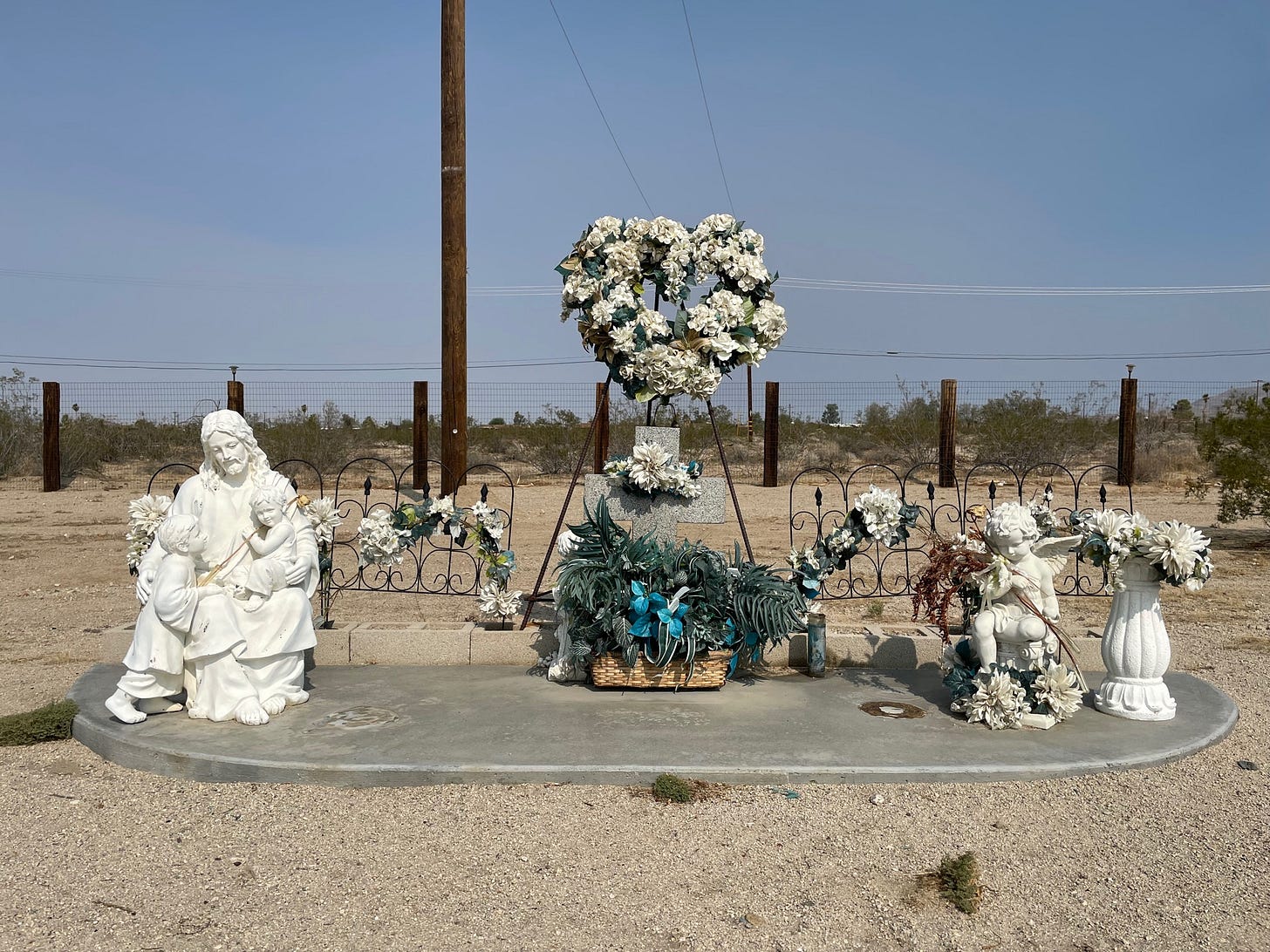
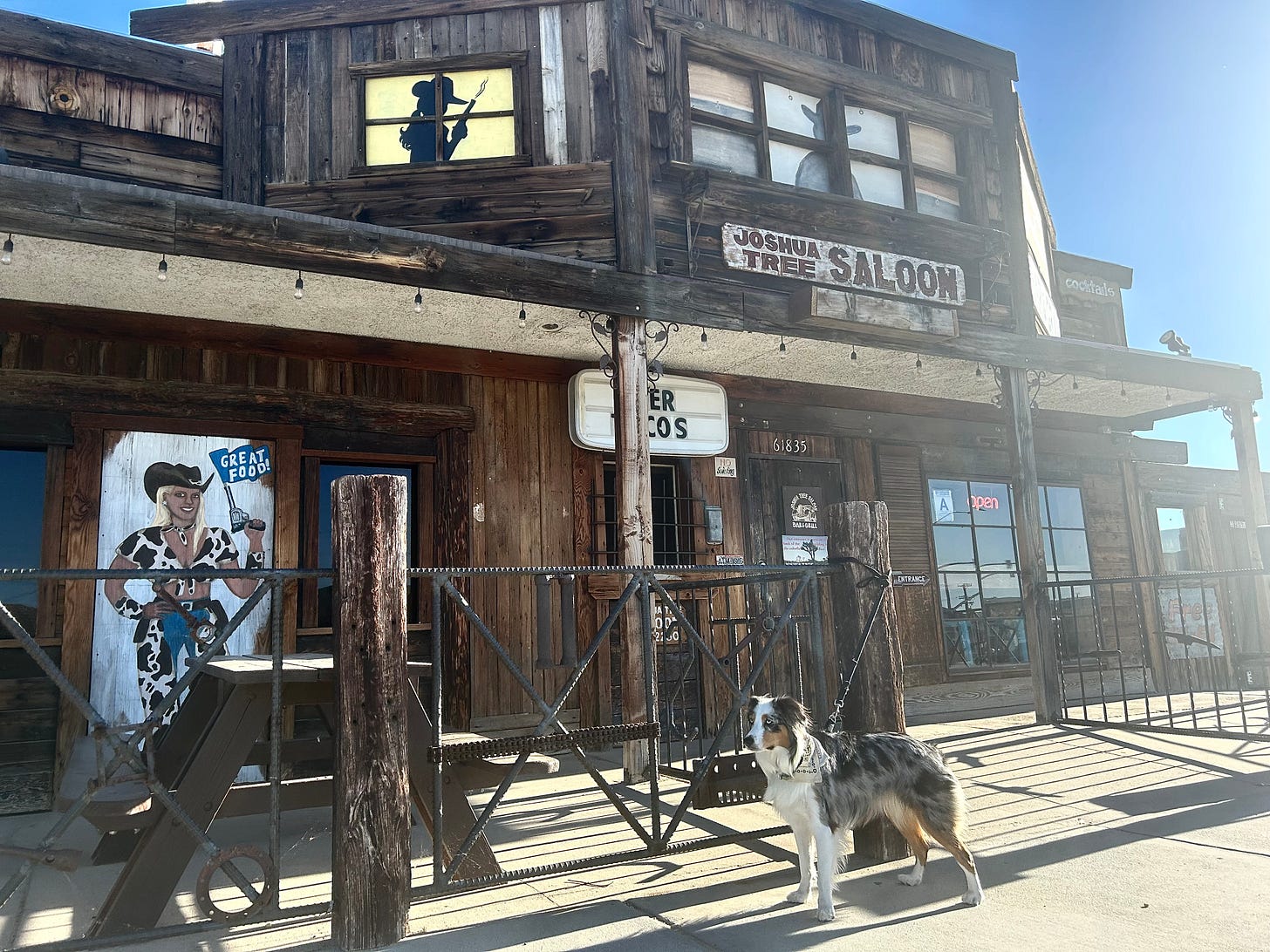
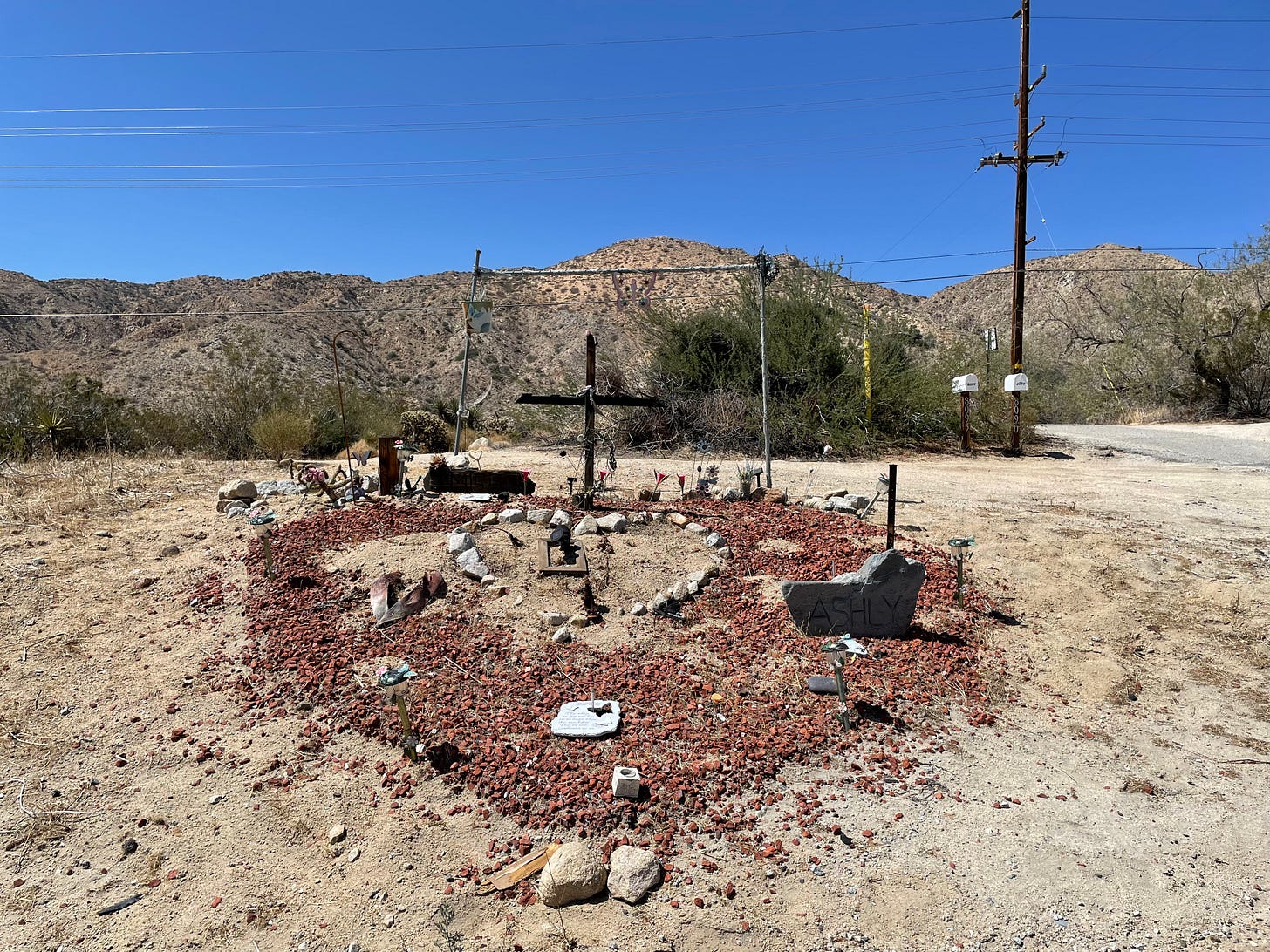


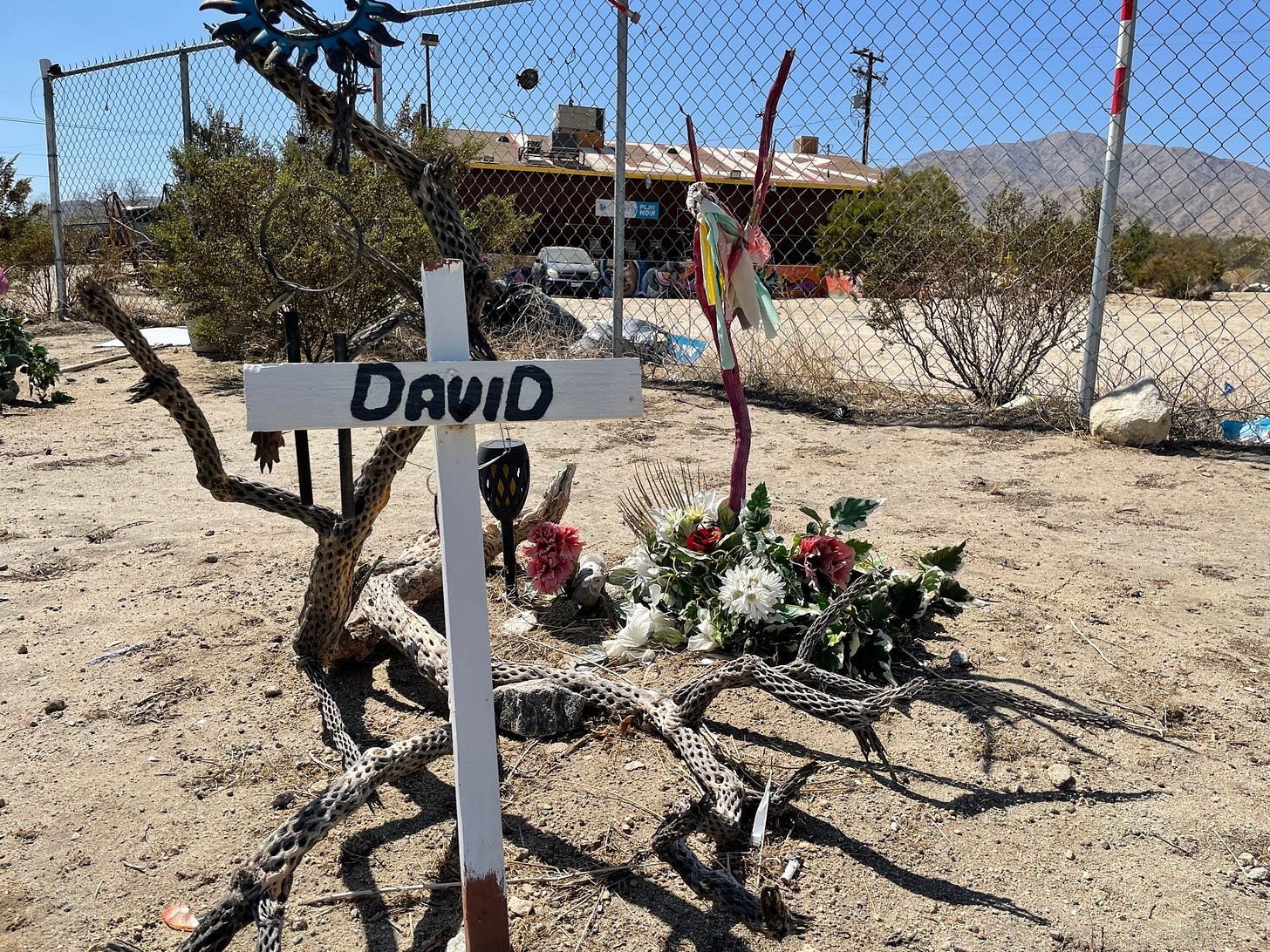

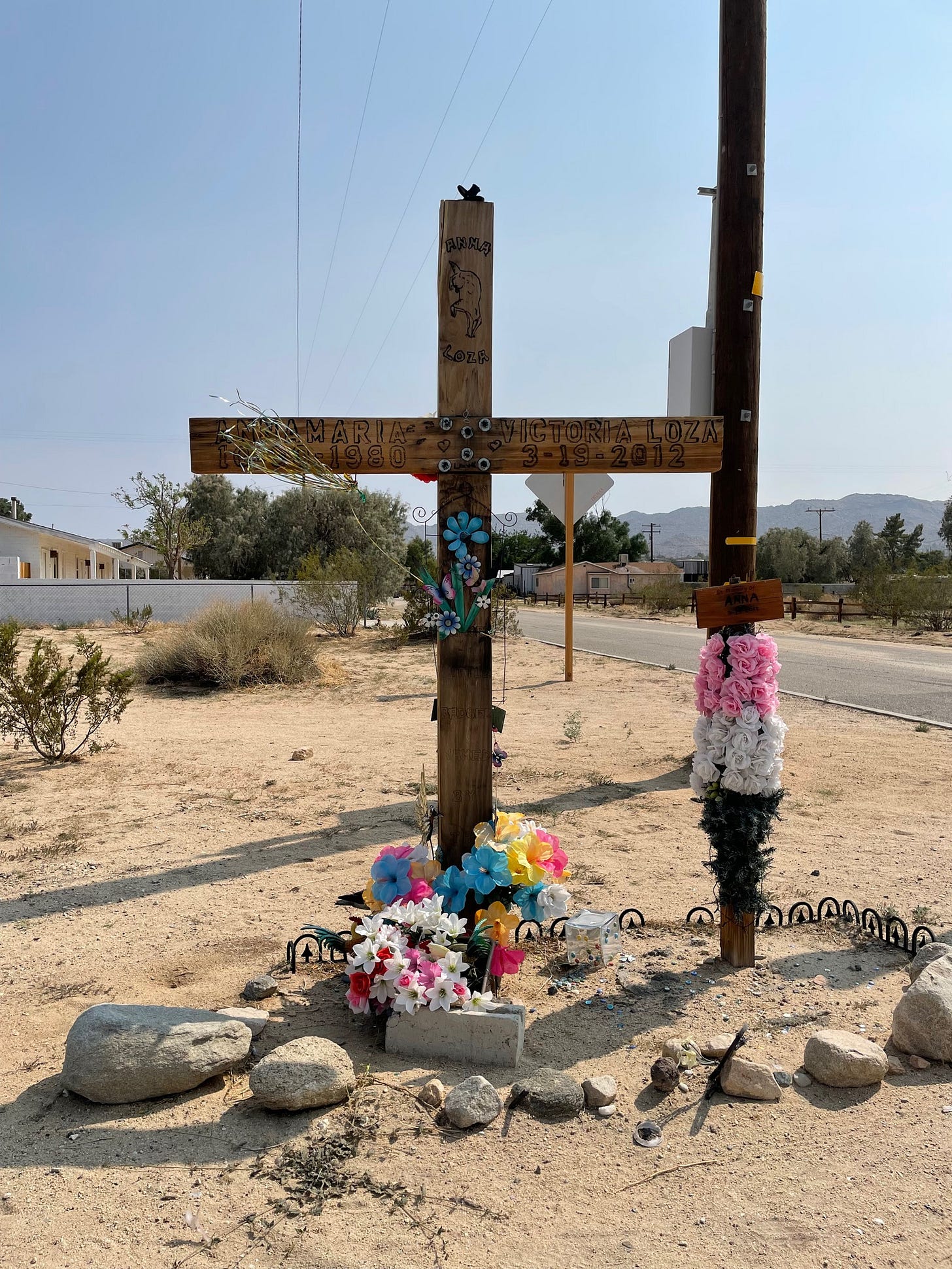
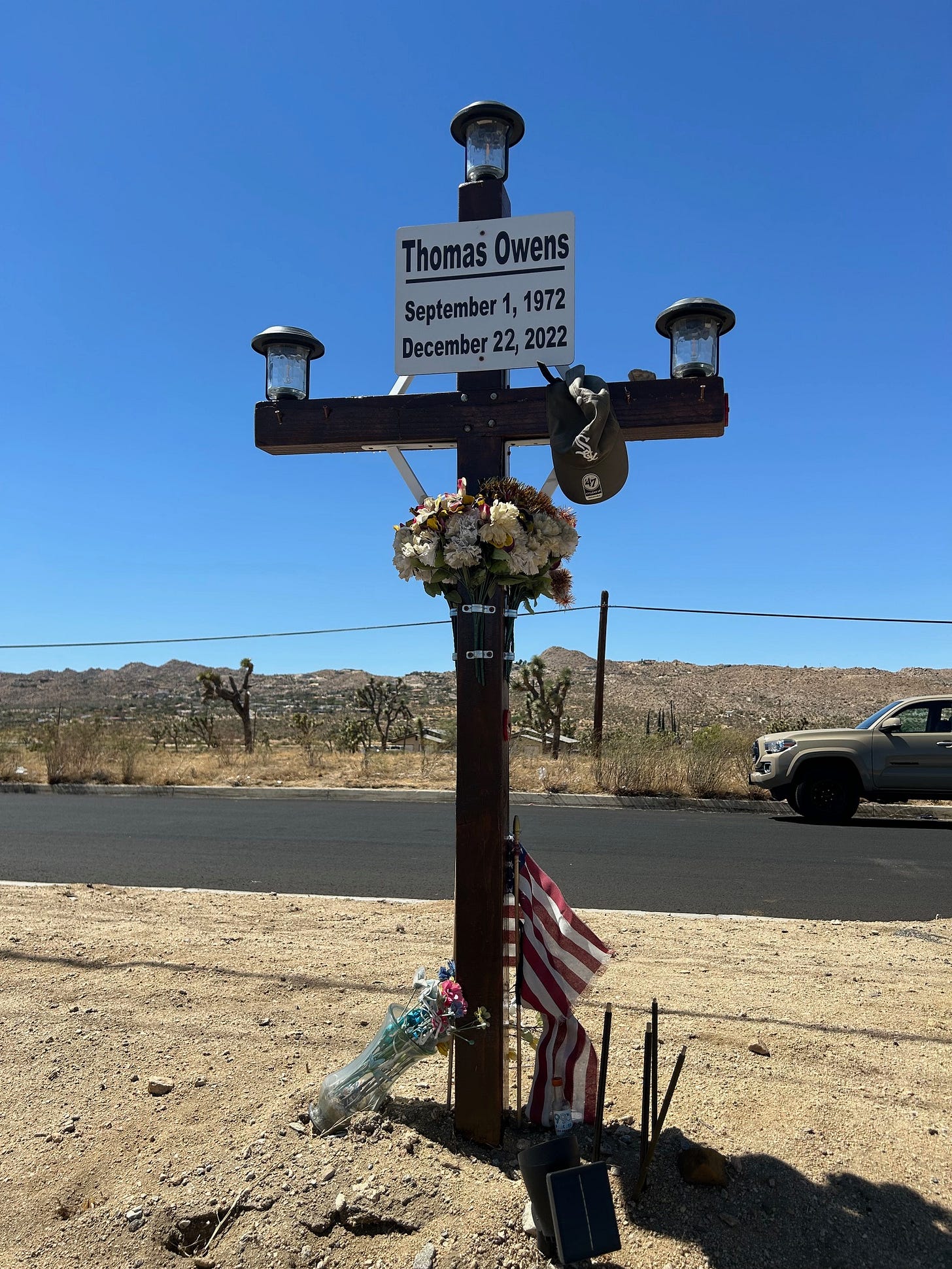
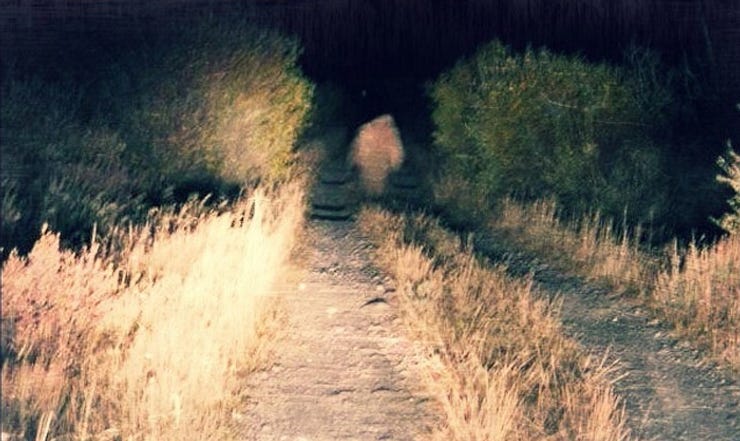
I love the high desert. My youngest daughter was born at the naval hospital in 29 Palms. We lived in Desert Hot Springs at the time. Thanks for this article on a very special place in California. Many great memories of that region. Miss it lots.